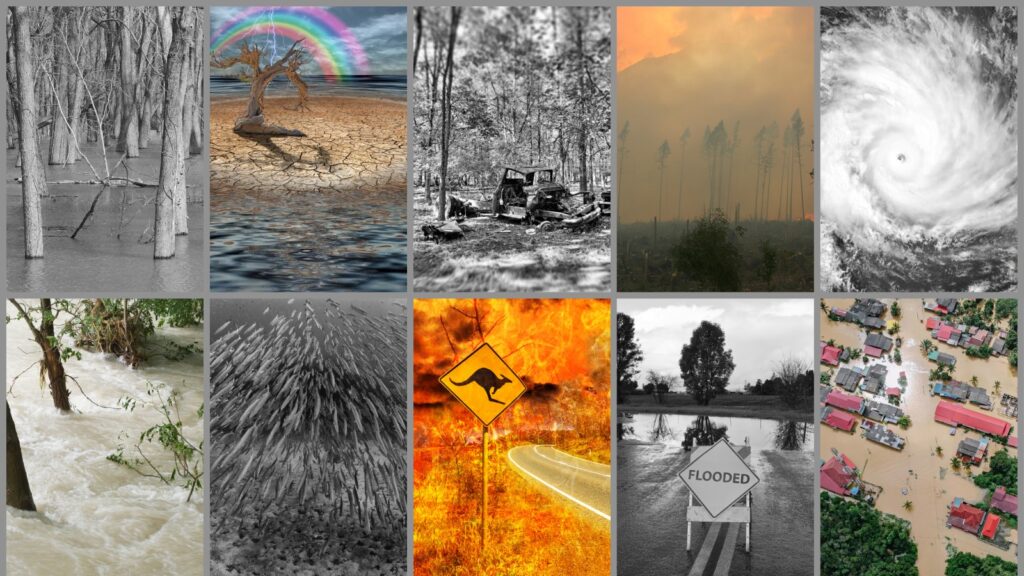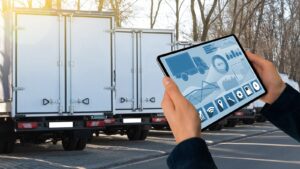Australia has been no stranger to the severe effects of climate change. While ‘climate change’ has been the most trending term since it was declared ‘code red for humanity’ long before, the climate crisis was regarded as global warming, referring to a time when it was not as dangerous. Contrary to the disbelief of certain countries regarding it as an actual threat to human existence, Australia has been a country that has consistently recognised the drastic consequences humans have to face if adequate steps are not taken. Australia, for instance, has experienced and been on the brink of water scarcity for some period. Thus, when it comes to the water industry, various advancements have been designed and made since the late 18th and early 19th centuries to curtail it. This article will provide an overview of how climate change has affected the water industry by drawing on certain environmental disasters.
Six Environmental Disasters that Affected the Water Industry

The rise in temperatures and the fluctuations in environmental conditions have led to a series of natural disasters. While these are termed as ‘natural’, some are of the view that they are man-made on the basis that humans instigated them. Here are some of the major historical environmental disasters that significantly affected the water industry of Australia, specifically in terms of water quality.
Great Deluge - 2022
Last year is regarded as the great deluge, an umbrella term for Australia’s severe floods and rains. This has been prevalent in Eastern Australia, and according to the climate council of Australia, the burning of coal, oil, and gas has been a critical reason. Floods have been one of Australia’s most expensive forms of natural disaster. The fact that this repeatedly occurred throughout the year does not help the water industry. Previously, the highest record of finances invested for the collateral damage due to floods was in 1974, in New South Wales, Victoria and Queensland, which resulted in a total cost of AUD 2.9 billion. The great year of the deluge earned the highest record of damages. This is because flood affects water quality and destroys infrastructure, leading to loss of lives and mass property damage. This also leads to water plants or wastewater plants that cannot withstand such weather conditions exploding or being contaminated with unclean water, affecting those who consume it for drinking.
Wild Storms in Eastern Victoria - 2021
In 2021 Yarra Valley Water issued a health warning to not drink water, even in its boiled form, in the areas of Kalista, Sherbrooke and The Patch. This is an example of where the lack of asset maintenance led to the drinking water collection area being contaminated with unsafe water. What made this event most significant was that unlike other situations of floods or possible events that may have led to drinking water being contaminated, the council requested water not to be consumed even after being boiled. Usually, this is not the case, as local governments have noted that contaminated water, even those subject to floods, would be safe for humans if the water is boiled. This meant the contamination Eastern Victoria experienced was subject to a very high amount of harmful chemicals and sediment particles. The latter poses a higher risk as sediment in the water, which is how water managers measure turbidity, can be dangerous since these particles can hold other contaminants or even shield pathogens from disinfection.
Bushfires - 2019 to 2020
The Bushfire Royal Commission notes that the bushfires that successively broke out from 2019 to 2020. The most popular side effect of the bushfires that took social media by storm has been the destruction of forests, the death of many animals, and the burning of over 18 million hectares of land. This included damage to over 5900 buildings, inclusive of over 2800 homes. It was also known that the fires resulted in toxic air pollution, requiring civilians to wear masks, and endangered cities far and wide as the poisonous air spread into other regions, including Argentine, Chile and New Zealand. As noted by the World Health Organisation, some of the effects the civilians exposed to such an atmosphere may have faced eye and respiratory tract irritations or more severe disorders, such as reduced lung function, bronchitis, exacerbated asthma and premature death.
What is not most popularly cited by news reports is the significant damage it caused to the water industry. The smoke, ashes and debris from the wildfires often end up in freshwater bodies, polluting them and affecting water quality. Considering that drinking water catchments are generally located in forested areas, the bushfires that occurred crucially put water safety at risk. Most notedly, due to the increased presence of nutrients such as nitrogen and phosphorous in bushfires, Australian freshwater bodies in the area were subjected to the growth of cyanobacteria, also known as blue-green algae. The same conditions also put Australian oceans at risk, putting marine ecologies in significant danger. A similar incident where the quality of water became an issue includes the danger of Canberra’s water supply which was contaminated by a bushfire in 2003. The damage done to the water systems took years to solve.
Increasing Incidents of Dead Fish Washing Ashore - 2018 to 2019
In December 2018, inhabitants near the Darling River experienced hundreds of dead perch floating along its banks. This was seen throughout the rivers in the small town of Menindee, Australia, where the fish washed ashore were dead and green in colour. Subsequently, from January 2019 onwards, the rate of dead fish increased, with more than 10,000 beings killed in the 40-kilometre river stretch, ending up taking over a million fish’s lives. The leading cause that has been cited is the rapid growth of algae blooms due to humans’ severe mismanagement of water bodies by humans and the weather pattern at the time. The lack of interest by the New South Wales government in managing the river basin for years has led to a severe backlash, requiring the water industry to take steps to manage freshwater bodies in the region.
Cyclone Debbie - 2017
This is not the first time Australia has faced a cyclone. Throughout the years, with Cyclone Yasi being the most imminent in 2011, Cycle Debbie left the country with enormous damage. The cyclone that slowly moved its way across the region led to the destruction of the water utility sector’s power network to feed the water and sewage networks. Hence, this exponentially resulted in water quality being affected temporarily, although the water industry reported that drinking water quality was not affected. The satellite images taken in the Burdekin river after Cyclone Debbie denote clear evidence of fresh runoff pollution from torrential rains sweeping into Great Barrier Reef waters. This is because most of the deluge remained in Australia after the cyclone was situated in northern Queensland. This is known as the “erosion hotspot”, which generates a third of the sediment that flows into the reef. Hence, due to the contamination of the Queensland river stretch, the Great Barrier Reef corrals were specifically in danger. It has constantly been argued that the water industry must take measures to minimise this erosion-prone region from worsening water bodies.
The Millenium Drought - 1996 to 2009
The millennium drought period is the lowest rainfall Australia has ever experienced. While different parts of Australia are said to have experienced drought conditions contrastingly, the millennium drought specifically refers to the thirteen-year-long drought that occurred. To understand the reason behind this extended drought, it is helpful to first know about the climate of Australia. The drought period in Australia is not unexpected. This is because the climate in the country, especially in the south and central areas, is hot and dry. The former, for instance, consists of a desert-like area with temperatures above 50°centigrade, where rain is sporadic. Hence, it is important to understand that Australia is considered the world’s driest inhabited continent.
Over the years, however, climate change has worsened its dry conditions, making the country even drier. In fact, the annual rail fall in the country is below average at present, with it being less than 470mm. In this context, the millennium drought emerged, putting Australia on the brink of water scarcity for eight long years. It occurred in the southern part of Australia. The severity of this environmental impact vastly affected agriculture and multiple states. The agriculture dominating the Murray-Darling basin dwindled, and so did the quantity of water accessible for major cities such as Perth, Adelaide, Canberra, Sydney, and Brisbane. Interestingly, the wet state capital of Hobart, Tasmania, also experienced severe water shortages.
Why Does The Water Industry Have a Higher Burden?
It is not simply the fact that there is less water supply in Australia that makes it stressful for the water industry. According to an article by National Geographic, Australia is the world’s thirstiest country, as an average person consumes 100,000 litres. The fact that Australia’s population is expected to soar in the next few years by 40 per cent has been an important reminder that requires the water industry to tackle and be ready before it is too late urgently. The 100,000 litres used amounts to 350 litres being used for drinking by one person daily, with the remaining being used for household consumption that ranges from around 1,000 litres per hour.
Additionally, it is interesting to note that more than 80 per cent of the Australian population lives in large coastal areas. Hence, many of the projects undertaken by governments, whether it is in terms of building the necessary infrastructure or implementing wastewater recycling or desalination plants in the region, are predominantly in such areas. As a result, the rural population continue to suffer detrimentally from access to water. They are expected to rely on rainwater or bore water, the latter of which is not safe for drinking. As of 2023, Queensland’s government has initiated projects to improve the water conditions in the region for rural populations.
The water industry, moreover, faces issues in agriculture in Australia. Around 70 per cent of water is allocated to farming, with half of the profits emerging from the Murray-Darling Basin. Due to the overuse of such natural resources, Australia underwent multiple changes during the millennium drought period, reducing meat production and entirely stopping cotton and rice farming. To date, the water industry has been consistently attempting to build a more sustainable and eco-friendly irrigation system.
Technology Being Used As A Solution
The urgent need to find solutions has led the water industry to test out industry 4.0 technologies that act as reliable tools to guarantee water quality. IIoT sensors, AI, ML, digital twins, data analytics, GIS and others are now being integrated to tackle such challenges cost-effectively. Such technologies additionally help water managers to control asset management and distribute water feasibly. Hence, although Australia may have sufficient freshwater to meet its needs, climate change, and especially the lack of rainfall and other hindrances that affect water quality, can be grappled with such technologies. Given that river flows are expected to decline by 10 to 25 per cent within the next ten years, it demands the water industry be creative and find affordable means to save its people.







